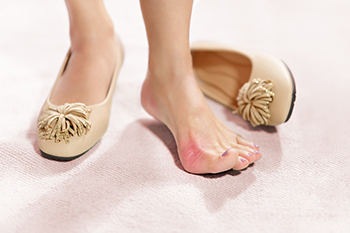Baytown, TX (281) 837-8371
Causes of Bunions
Tuesday, 18 April 2023 00:00
A hard lump on the side of the toe may be a bunion. It is considered to be a deformity, and large bunions may cause difficulty while wearing shoes. Women can be prone to developing bunions as a result of the high heels that are worn. They generally provide little room for the toes to move freely in, and this may cause the side of the big toe to rub on the shoe. Some patients notice their toes shifting toward each other, as the bunion may cause this misalignment. Corns and calluses may develop on top of the bunion, and putting a protective pad over it may bring relief. Pain may be caused by a bunion, and the toe may become numb or have a burning sensation. If you have developed a bunion, it is suggested that you speak to a podiatrist, who can offer you relief solutions, which may include minor surgery for removal.
If you are suffering from bunion pain, contact Abeer M. Foteh, DPM of Greater Houston Foot Centers. Our doctor can provide the care you need to keep you pain-free and on your feet.
What Is a Bunion?
Bunions are painful bony bumps that usually develop on the inside of the foot at the joint of the big toe. As the deformity increases over time, it may become painful to walk and wear shoes. Women are more likely to exacerbate existing bunions since they often wear tight, narrow shoes that shift their toes together. Bunion pain can be relieved by wearing wider shoes with enough room for the toes.
Causes
- Genetics – some people inherit feet that are more prone to bunion development
- Inflammatory Conditions - rheumatoid arthritis and polio may cause bunion development
Symptoms
- Redness and inflammation
- Pain and tenderness
- Callus or corns on the bump
- Restricted motion in the big toe
In order to diagnose your bunion, your podiatrist may ask about your medical history, symptoms, and general health. Your doctor might also order an x-ray to take a closer look at your feet. Nonsurgical treatment options include orthotics, padding, icing, changes in footwear, and medication. If nonsurgical treatments don’t alleviate your bunion pain, surgery may be necessary.
If you have any questions, please feel free to contact our office located in Baytown, TX . We offer the newest diagnostic and treatment technologies for all your foot care needs.







